What Are You Reading?: Deborah Lam
We hope you have enjoyed the various interviews presented in the K-SAA's 'What Are You Reading?' series so far. Today we are delighted to continue the series with a fascinating response from Deborah Lam. Deborah is a PhD researcher and Associate Tutor at the University of Bristol, and she explains her current project:
My thesis attempts to define an aesthetics of excess in the work of Keats and the Pre-Raphaelite Circle, and explores forms of copiousness from poetry to visual art. Currently, I am convening the Poetry module for the English Literature and Community Engagement BA. Before coming to Bristol, I read English and Related Literature at the University of York, and then for an MPhil in Eighteenth-Century and Romantic Literature at St Catharine’s College, Cambridge, during which my dissertation examined visions, optical phenomena and phenomenology in Coleridge’s writing.
In these posts we hope to support and encourage discussions relating to the latest Romantic-period scholarship, especially those publications (online and in print) concerned with the second generation of Romantic writers: Keats, the Shelleys, Byron, and their circles. We also want to know about what scholars might be reading more broadly, and of course, what informs their teaching... Would you like to be a future interviewee? Get in touch. But for now, enjoy Deborah Lam on new and classic Keats scholarship, studies in Art History, and invaluable texts for teaching students about meaningful close reading.What new studies of Romantic literature are you reading right now?Lately, I’ve been reading Hrileena Ghosh’s new book, John Keats’ Medical Notebook: Text, Context, and Poems. An important addition to the existing body of Keats’s writing, the annotated facsimile of the notebook Keats kept while training to be a surgeon at Guy’s Hospital provides a much-needed disambiguation of the poet’s scientific education. As a genre of criticism, the combination of edited or translated works alongside chaptered monographs makes an excellent example of how editorial and translation work are critical activities in themselves. Ghosh’s in-depth discussion of the material and how Keats’s training informed his poetry highlights this kind of hybridised scholarship. And, although I don’t keep up with the latest scholarship in the field as much as I would like, I have also been dipping in and out of the recently-published Cambridge Companion to ‘Lyrical Ballads’.
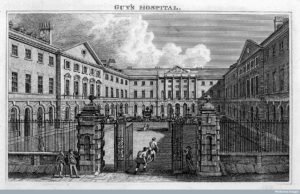 Does this writing inform your current research and/or teaching?My current project isn’t terribly timely in that it doesn’t make as much use of Ghosh’s new research as it perhaps should, but I’m very grateful that it’s available online when physical libraries are shut. In a time when the inability to access libraries and archives has meant that the resources we rely on for research have suddenly become unavailable, I’m trying to allow myself to be surprised by the materials that may not seem directly related to my thesis. Ghosh’s reading of Keats’s poetry helps contextualise a lot of the phenomenological aspects of embodiment that I examine in terms of a more physiological dimension.What’s the critical book that figured most significantly in your PhD thesis/ first monograph/ most recent monograph?Choosing one is like picking a favourite child; I enjoy reading criticism immensely, and am indebted to so many books. Elizabeth Prettejohn’s book Art for Art’s Sake: Aestheticism in Victorian Painting has been absolutely crucial in shaping my understanding of the Pre-Raphaelites’ later involvement in the Aesthetic Movement, and has influenced a lot of the thinking that has gone into my thesis. As an Art Historian, Prettejohn has, I think, a rather literary style of analysing art and an incredible sensitivity to language when attending to the writing of the Pre-Raphaelite Circle.At the risk of coming across as biased, the most frequently recurring feature in my thesis is probably Andrew Bennett’s Keats, Narrative and Audience. Andrew’s monograph was the first literary critical book I ever read, and I always come back to its incisive readings of Keats’s work. Criticism can be of value because it makes insightful arguments, or because engaging with it is productive; Keats, Narrative and Audience is a rare example of criticism that does both.
Does this writing inform your current research and/or teaching?My current project isn’t terribly timely in that it doesn’t make as much use of Ghosh’s new research as it perhaps should, but I’m very grateful that it’s available online when physical libraries are shut. In a time when the inability to access libraries and archives has meant that the resources we rely on for research have suddenly become unavailable, I’m trying to allow myself to be surprised by the materials that may not seem directly related to my thesis. Ghosh’s reading of Keats’s poetry helps contextualise a lot of the phenomenological aspects of embodiment that I examine in terms of a more physiological dimension.What’s the critical book that figured most significantly in your PhD thesis/ first monograph/ most recent monograph?Choosing one is like picking a favourite child; I enjoy reading criticism immensely, and am indebted to so many books. Elizabeth Prettejohn’s book Art for Art’s Sake: Aestheticism in Victorian Painting has been absolutely crucial in shaping my understanding of the Pre-Raphaelites’ later involvement in the Aesthetic Movement, and has influenced a lot of the thinking that has gone into my thesis. As an Art Historian, Prettejohn has, I think, a rather literary style of analysing art and an incredible sensitivity to language when attending to the writing of the Pre-Raphaelite Circle.At the risk of coming across as biased, the most frequently recurring feature in my thesis is probably Andrew Bennett’s Keats, Narrative and Audience. Andrew’s monograph was the first literary critical book I ever read, and I always come back to its incisive readings of Keats’s work. Criticism can be of value because it makes insightful arguments, or because engaging with it is productive; Keats, Narrative and Audience is a rare example of criticism that does both.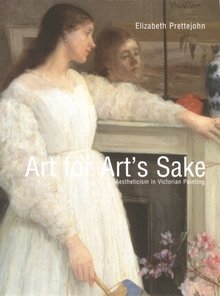
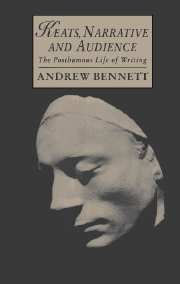 What books are in your ‘to read next’ pile right now? (poetry, fiction, theory, anything!)Stephen Wildman’s edited collection ‘A New and Noble School’: Ruskin and the Pre-Raphaelites and A Pot of Paint: Aesthetics on Trial in Whistler v. Ruskin by Linda Merrill are next on the list for a chapter. I’ve already read parts of Merrill’s diligently-researched recreation of the Whistler v Ruskin trial for another chapter, and can’t wait to read it cover to cover – that such fundamentally problematic issues of representation, verisimilitude, artistic effort and sincerity were interrogated in a legal battle, which was, in parts, both funny and terrible, is fascinating to me.What books are on your night table or desk?When working from home, I’m not as disciplined in tidying my desk as regularly, which means that there are more books on it than would be conducive. Stillinger’s edition of Keats’s Complete Poems is a permanent fixture of my desk, but as I’m trying to finish a chapter, there is also Stillinger’s Reading ‘The Eve of St. Agnes’, Levinson’s Keats’s Life of Allegory, W. J. T. Mitchell’s Iconology, Lessing’s Laocoön and two massive Burne-Jones catalogues. There may be a bad game in this eclectic selection to do with guessing what the chapter is about, but I wouldn’t recommend playing it.
What books are in your ‘to read next’ pile right now? (poetry, fiction, theory, anything!)Stephen Wildman’s edited collection ‘A New and Noble School’: Ruskin and the Pre-Raphaelites and A Pot of Paint: Aesthetics on Trial in Whistler v. Ruskin by Linda Merrill are next on the list for a chapter. I’ve already read parts of Merrill’s diligently-researched recreation of the Whistler v Ruskin trial for another chapter, and can’t wait to read it cover to cover – that such fundamentally problematic issues of representation, verisimilitude, artistic effort and sincerity were interrogated in a legal battle, which was, in parts, both funny and terrible, is fascinating to me.What books are on your night table or desk?When working from home, I’m not as disciplined in tidying my desk as regularly, which means that there are more books on it than would be conducive. Stillinger’s edition of Keats’s Complete Poems is a permanent fixture of my desk, but as I’m trying to finish a chapter, there is also Stillinger’s Reading ‘The Eve of St. Agnes’, Levinson’s Keats’s Life of Allegory, W. J. T. Mitchell’s Iconology, Lessing’s Laocoön and two massive Burne-Jones catalogues. There may be a bad game in this eclectic selection to do with guessing what the chapter is about, but I wouldn’t recommend playing it.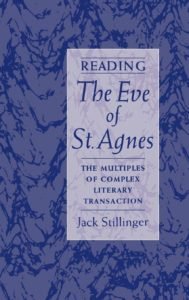 While writing, I also like to keep a copy of Seamus Perry’s Coleridge and the Uses of Division at hand. It informed a lot of my MPhil project, and whenever I work myself into a rut trying to express an idea that is especially difficult to express, Perry’s precise diction and the creative elasticity of his syntax remind me of how brilliant effective writing can be in articulating complex arguments.On my night table is a copy of Eavan Boland’s Object Lessons that I am re-reading. Boland recently passed away, and the day after the news of her death, I recommended it to a student while discussing an essay they wanted to write on one of her poems, picked it up again myself and couldn’t put it down. Her prose often echoes her poetry’s undulating lyricism and I’m now trying to read large parts of the book aloud.Which books do you most frequently recommend to your students? Which students? Why?A large part of my teaching is a thinly-veiled attempt to persuade students of the strengths of thoughtful, attentive close reading, so many of my recommendations are part of this campaign: Christopher Ricks’s The Force of Poetry, as a good starting place for poetry analysis; John Clare in Context, in particular, Seamus Heaney’s reading of ‘A Mouse’s Nest’; and William Keach’s Shelley’s Style (particularly his chapter on rhyme).
While writing, I also like to keep a copy of Seamus Perry’s Coleridge and the Uses of Division at hand. It informed a lot of my MPhil project, and whenever I work myself into a rut trying to express an idea that is especially difficult to express, Perry’s precise diction and the creative elasticity of his syntax remind me of how brilliant effective writing can be in articulating complex arguments.On my night table is a copy of Eavan Boland’s Object Lessons that I am re-reading. Boland recently passed away, and the day after the news of her death, I recommended it to a student while discussing an essay they wanted to write on one of her poems, picked it up again myself and couldn’t put it down. Her prose often echoes her poetry’s undulating lyricism and I’m now trying to read large parts of the book aloud.Which books do you most frequently recommend to your students? Which students? Why?A large part of my teaching is a thinly-veiled attempt to persuade students of the strengths of thoughtful, attentive close reading, so many of my recommendations are part of this campaign: Christopher Ricks’s The Force of Poetry, as a good starting place for poetry analysis; John Clare in Context, in particular, Seamus Heaney’s reading of ‘A Mouse’s Nest’; and William Keach’s Shelley’s Style (particularly his chapter on rhyme).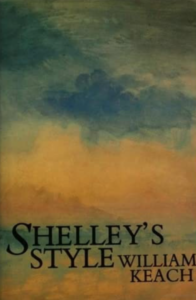 I also try to include books that challenge or complicate the topics taught in my students’ recommended critical diet. Ben Lerner’s The Hatred of Poetry comes in handy whenever I teach poetry because of how it reframes the preconceived notion of poetry’s inaccessibility in thought-provoking ways. I also have recommendations for specific students: my go-to prescription for Austen sceptics is Butler’s Jane Austen and the War of Ideas, and although not a book, I casually (sadistically) mention Jerome McGann’s essay ‘The Meaning of the Ancient Mariner’ with fair warning for brave students.Have there been any mainstream articles or publications on the Romantics you’d like to draw our attention to?While not strictly about the Romantics, Jonathan Jones’s reviews for the Guardian on eighteenth- and nineteenth-century art are always deliciously provocative, Jones even going so far as to claim that Blake ‘blows away Constable and Turner’ his review of the latest William Blake retrospective at Tate Britain. Despite him repeatedly being asked to review the spate of recent Pre-Raphaelite exhibitions, Jones absolutely despises the Pre-Raphaelites to a comical degree. There is something very familiar about his antipathy towards the Pre-Raphaelites, and it’s interesting to see how taste is cyclical. Reminiscent of the complaints of their Victorian contemporaries, I even borrow the phrase ‘strangely dessicated [sic]’ from Jones’s censure of the Burne-Jones exhibition last year for the title of my chapter on the painter.View all of the posts in this series here.
I also try to include books that challenge or complicate the topics taught in my students’ recommended critical diet. Ben Lerner’s The Hatred of Poetry comes in handy whenever I teach poetry because of how it reframes the preconceived notion of poetry’s inaccessibility in thought-provoking ways. I also have recommendations for specific students: my go-to prescription for Austen sceptics is Butler’s Jane Austen and the War of Ideas, and although not a book, I casually (sadistically) mention Jerome McGann’s essay ‘The Meaning of the Ancient Mariner’ with fair warning for brave students.Have there been any mainstream articles or publications on the Romantics you’d like to draw our attention to?While not strictly about the Romantics, Jonathan Jones’s reviews for the Guardian on eighteenth- and nineteenth-century art are always deliciously provocative, Jones even going so far as to claim that Blake ‘blows away Constable and Turner’ his review of the latest William Blake retrospective at Tate Britain. Despite him repeatedly being asked to review the spate of recent Pre-Raphaelite exhibitions, Jones absolutely despises the Pre-Raphaelites to a comical degree. There is something very familiar about his antipathy towards the Pre-Raphaelites, and it’s interesting to see how taste is cyclical. Reminiscent of the complaints of their Victorian contemporaries, I even borrow the phrase ‘strangely dessicated [sic]’ from Jones’s censure of the Burne-Jones exhibition last year for the title of my chapter on the painter.View all of the posts in this series here.

